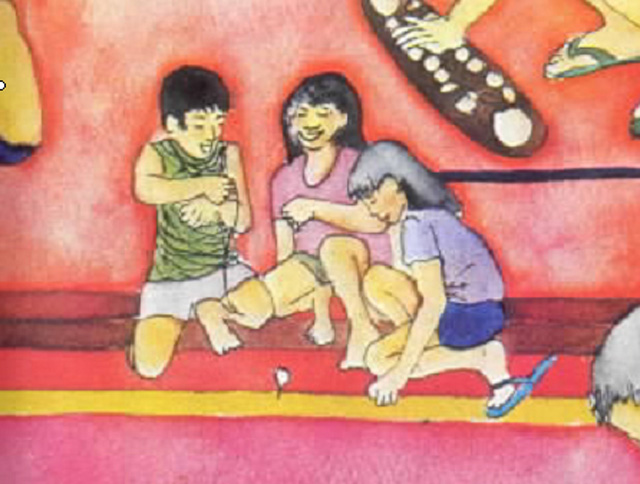Ani
(September 26, 2008 to January 16, 2009)
The Traditional Way of Harvesting Rice in Ilocos Norte
A satellite exhibit of bayANInanding
Metropolitan Museum of Manila
Fernando Amorsolo, or Nanding, as our National Artist was fondly called, is most known for his rural landscapes and genre paintings suffused with light, life, and joy.
Winnowing Rice, painted in 1936 by the artist, features a post-harvest scene were palay grains are tossed in the air from a bamboo tray in order to separate the chaff. The rhythmic and almost playful action this requires conceals yet another laborious stage of farm work that is part of the rice production cycle.
Enthused by this manual method of winnowing rice, Museo Ilocos links up with the ongoing bay ANInanding Retrospective on Amorsolo through this satellite exhibit on the traditional methods of harvesting rice in Ilocos Norte. Farming culture varies from region to region, in spite of having only one goal: to have the staple food – rice, served at every table.
The fields of Ilocos become virtual blankets of gold during the harvest months of September, October, and November. The locals are occupied with reaping nature’s golden reward after months of toiling the land. The scene depicts the familial and communal spirit and industry of the Ilocanos.
Although the Philippine landscape and its people have change radically, rice farming and the corresponding values engendered by Fernando Amorsolo’s paintings remain alive in many rural areas in the country.
Driving along the countryside in Ilocos during harvest time called “ani” in the months of September, October and November, gives a breathtaking panoramic view of Amorsolo-like paintings coming to life. Harvesters, men, women of all ages wearing protective work clothes and straw hats to shield themselves from the scorching sun plod along the rice paddies as they harvest. This picture perfect scene emanates admirable team spirit, cooperation, industry of families working together so that every family has the most important staple food – rice, served at every dining table.
Every step of “ani” is shared by the harvesters, from the cutting of the mature rice panicles with a kumpay (toothed sickle) after harvesting the rice stalks are then bundled after they were dried in the sun for a period of time. The bundles are in uniform sizes called bettek which are tied together in sets so that they are proportionally divided among the sharecroppers.
Threshing which is done manually is a difficult task of separating the rice grains from the stalks. In Ilocos, the most common method is beating the rice stalks on a threshing rack to shake off the rice grains that will fall on a sawali mat. The rice grains are separated from unwanted debris by manually winnowing with the aid of the wind. The cleaned rice grains are then put in sacks and stored in the granary called Sarusar.
The last day of “ani” is a time for celebration by the harvesters, their families and neighbors who observe ancient rituals to thank the rice spirits and the good earth for the yield and there is euphoria for every bountiful harvest. There is merrymaking and niniogan, a coconut and rice dish, a traditional favorite, is served. This happy time strengthens and enhances the bond among families.
Ani is the reward for hard work, a time that the harvesters literally “reap the fruits of their labor.”

















